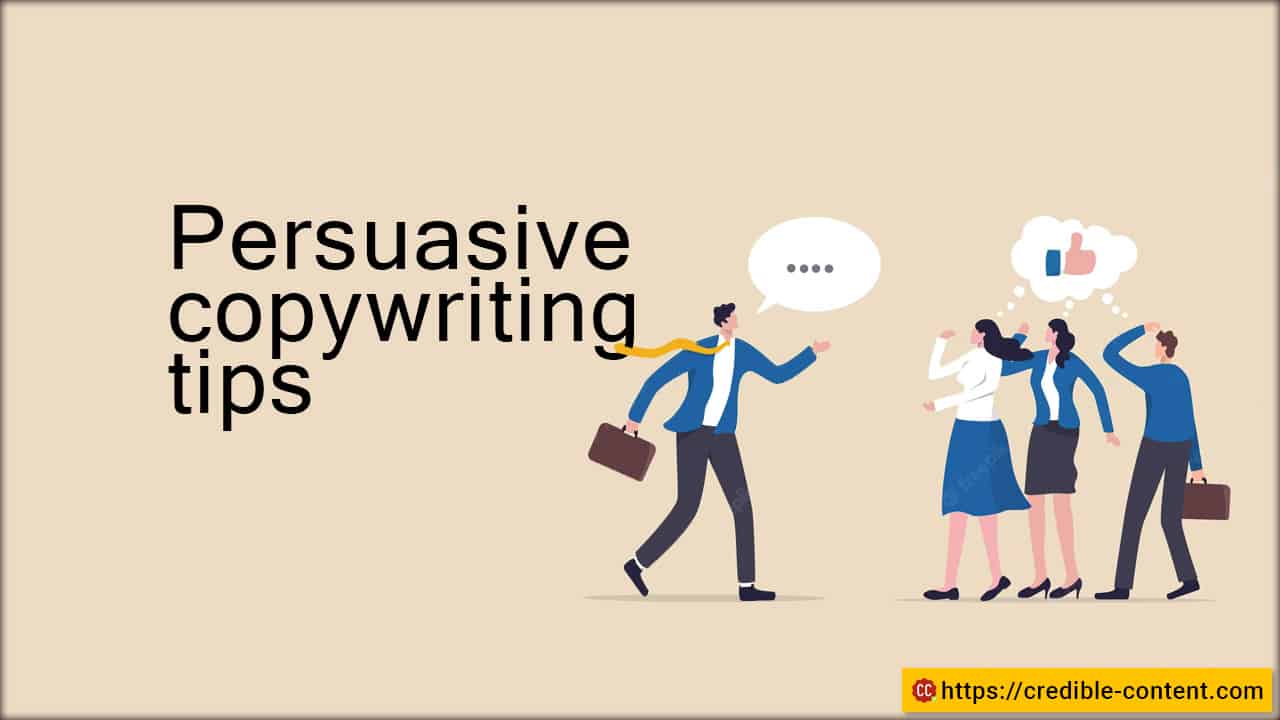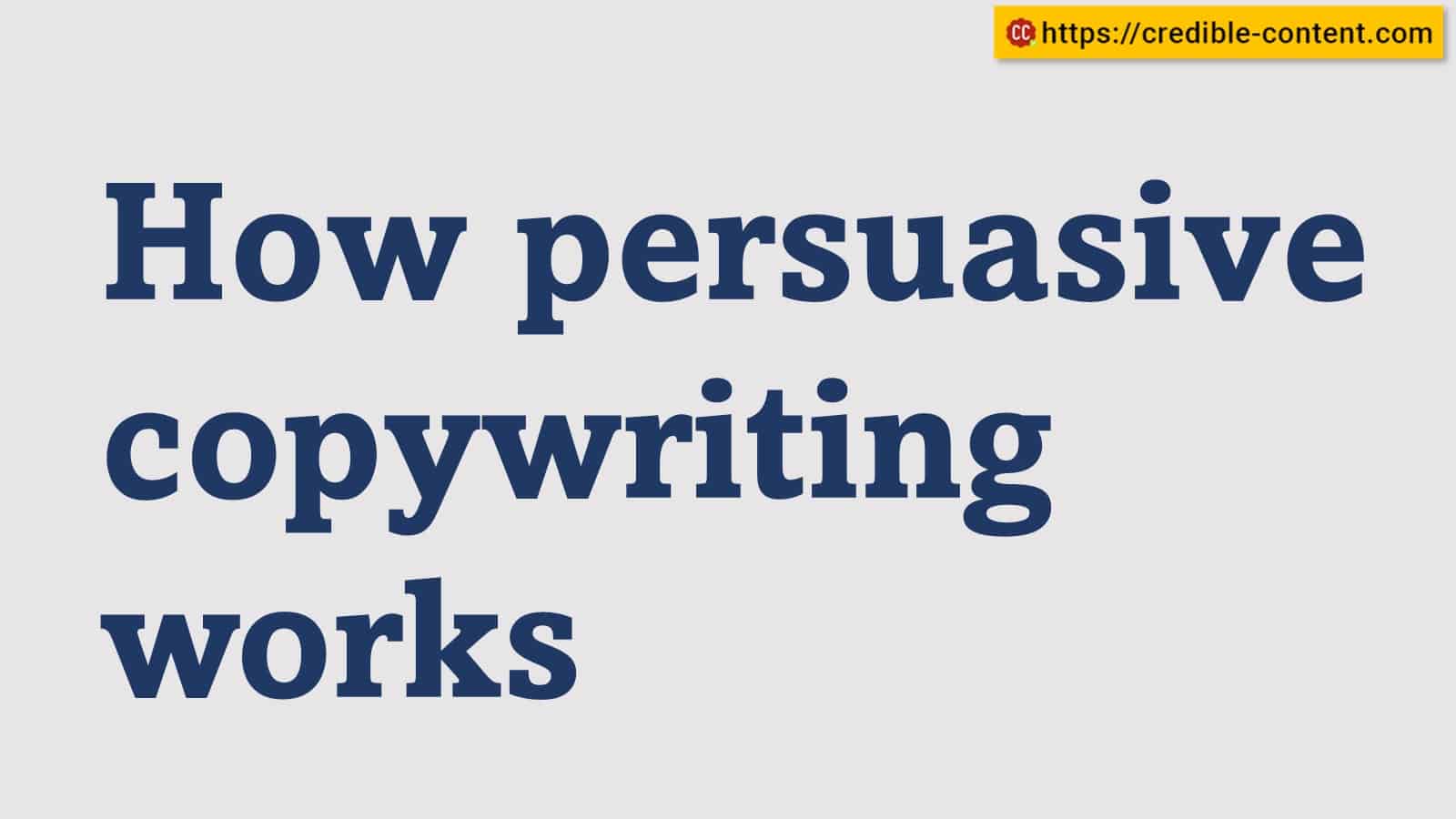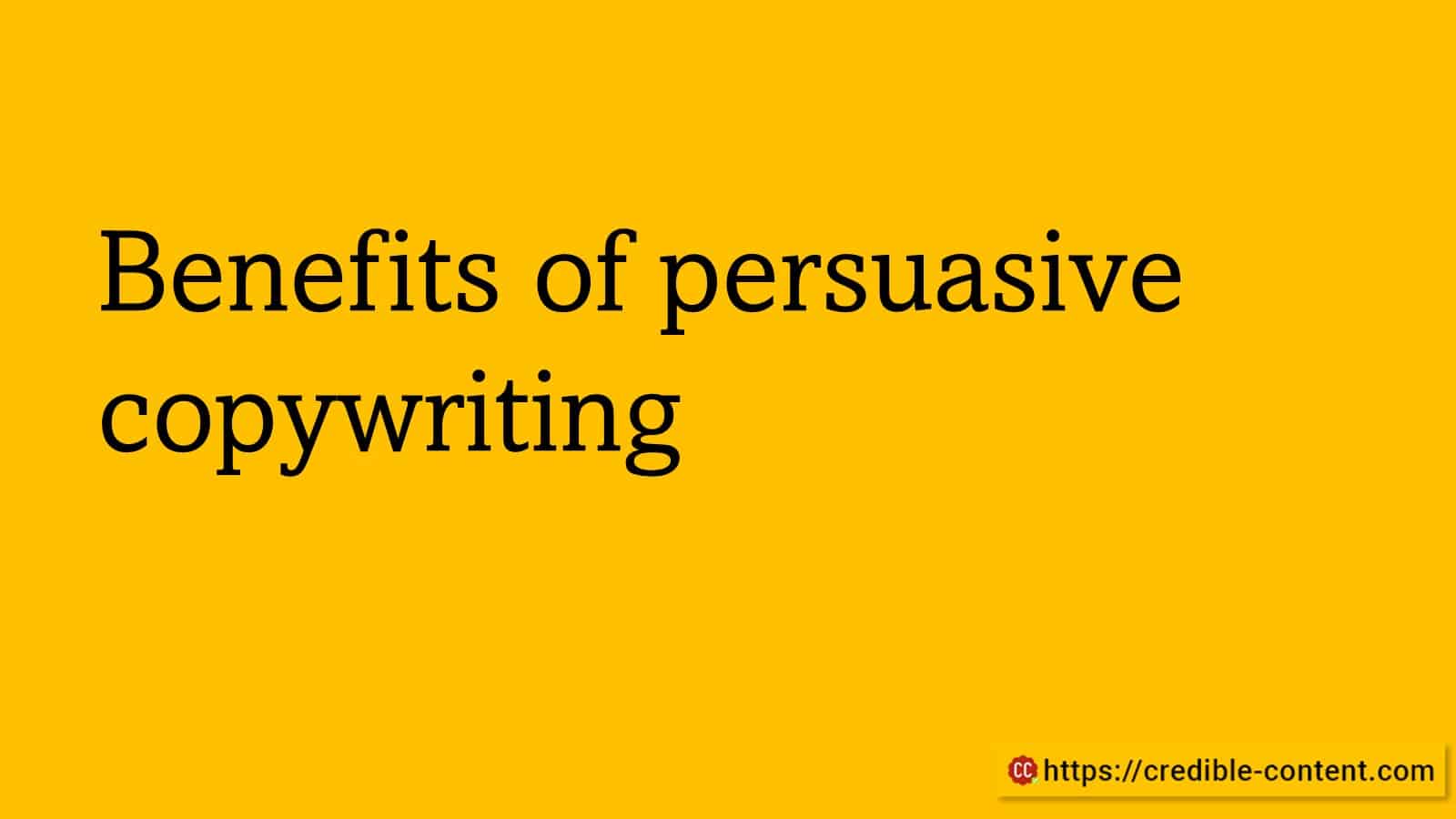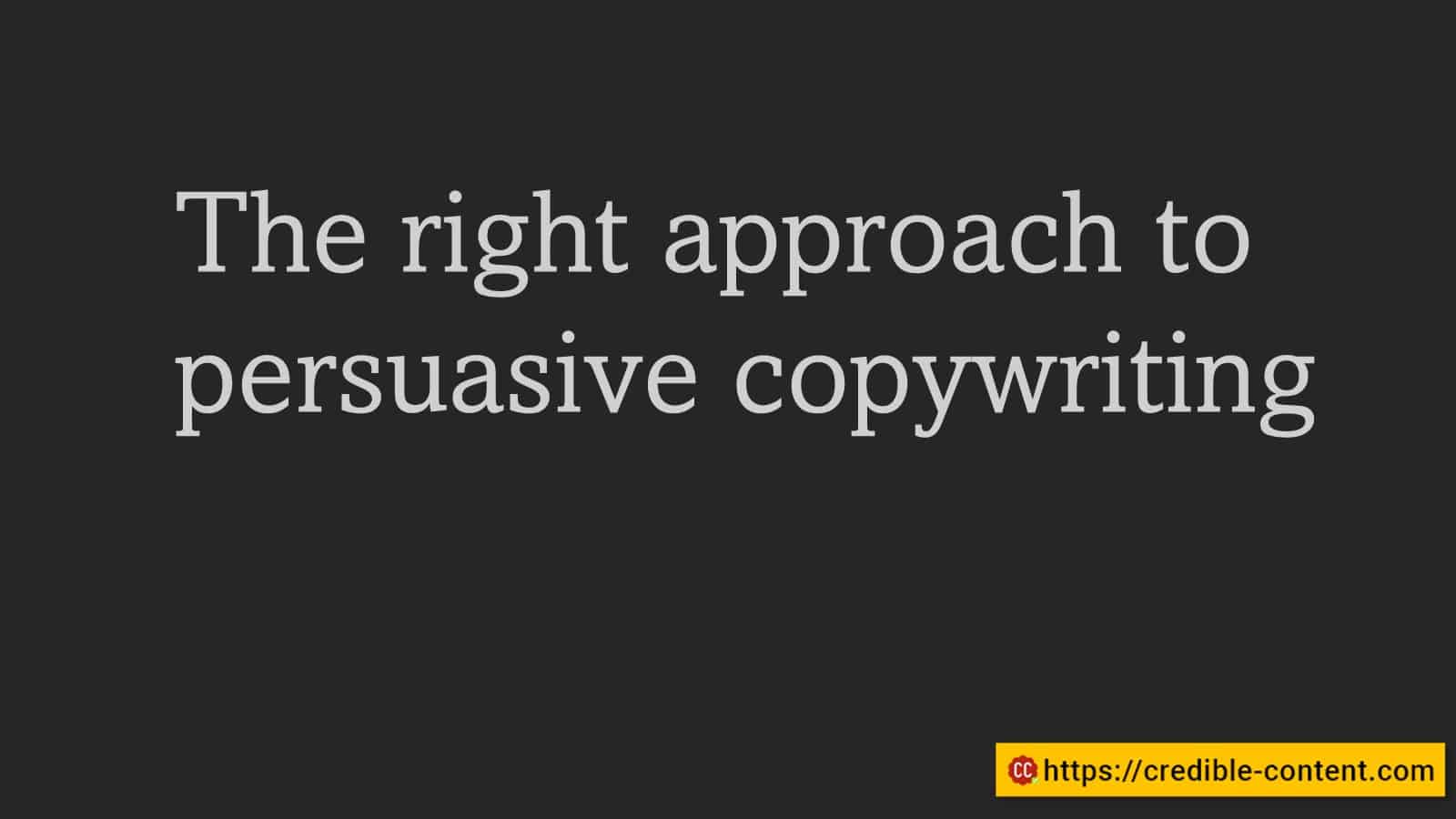In copywriting, persuasive writing is used a lot.
Dr. Roberts Cialdini has written a complete book on the topic of persuasion: Influence: The Psychology of Persuasion.
The book lists multiple principles you can use to influence and persuade people through copywriting. The main highlights of these principles are
- The principle of reciprocation: If you do someone a favor, people tend to feel obligated to return the favor.
- The principle of commitment and consistency: If they have previously agreed to do something you have asked them to do, they are more likely to say yes to your next request.
- The principle of social proof: People feel reassured when they see the others using your product or service or talking about its benefits and features in a positive sense.
- The principle of liking: Your target audience is more likely to respond positively to your message if they like you.
- The principle of authority: People are more likely to pay attention to an expert or a person who has an authority over a topic.
- The principle of scarcity: If you create a sense of scarcity (genuine) people are more likely to buy from you out – they feel as if the item is in short supply and hence, they will be deprived of it if they don’t act fast.
- The principle of unity: This is groupthink. If the community indulges in an activity (buying from you) they are more likely to buy from you.
- The principal of contrast: If you make an offer that is expensive and after that if you make an offer that costs less, people are more likely to opt for the latter.
These principles can be incorporated into persuasive copywriting.
How does persuasive copywriting work?
When you persuade people, you influence their decision.
You convince them into taking an action that otherwise they were not taking voluntarily.
You change their mind.
How do you change people’s minds?
You talk to them, or you write to them persuasively.
You present indisputable facts.
You create mental images in their minds?
You use the right, provocative words that unleash psychological triggers.
You write in a manner that it becomes almost impossible for them to say no to you.
Persuasive writing is important in copywriting.
Whether you are writing copy for an email campaign, for a landing page, or simply for individual web pages of a website, you need to convince people into taking an action.
How does persuasive writing benefit you when copywriting?
Many writers intermix content writing and copywriting when they talk of writing for the web or for digital marketing.
You may like to read Difference between content writing and copywriting: explained.
After all, whenever you are writing, you’re convincing people.
Even if you write a case study, the ultimate goal is to sell your expertise, or the core benefits of working with you.
When you are writing a blog post, you are presenting an idea.
For business blogging specially, the moot point of publishing your blog post is to educate people, to deliver value, and then ultimately, convince them to do business with you, directly or indirectly.
Your copywriting is meant to convince people.
If you don’t sound convincing, if you cannot persuade, you are not helping your cause.
You persuade more with your copywriting, you make more sales. You increase sales and revenue.
You can effectively communicate the benefits of your product or service.
You can increase your brand awareness and recognition.
Through persuasive copywriting, you can drive more traffic to your website and generate better-converting leads.
Persuasive copywriting can help you differentiate yourself from your competitors.
You can make an emotional connection with your target audience and build brand loyalty.
10 persuasive copywriting tips
“The best copy doesn’t just move people to take action, it moves them to believe.” – Joe Sugarman.
Copywriting is about creating a connection with your audience. It leads them towards a desired action.
You use a mix of language and storytelling to create an emotional connection with your audience.
Persuasive copywriting is about understanding human psychology and effectively communicating with your target audience.
You need to understand what makes people tick and then write something that motivates them to act.
You must write a message that resonates with them.
Listed below are 10 tips that can help you write persuasively.
1. Use a clear and compelling headline
8 out of 10 people just read your headline.
Use strong, action-oriented words to grab your reader’s attention.
Make sure that your headline clearly communicates your central message.
Paint a positive picture but be realistic.
Example:
“Lose 5 pounds in two weeks with our one-of-a-kind diet plan”.
2. Know your target audience
What are the main pain points of your target audience?
What motivates them to take an action?
What type of language do they use when they talk about the product or service you are promoting?
For persuasive copywriting, you must tailor your message and language that appeals to your specific audience.
The narrower you go, the better will be the impact of your writing.
3. Storytelling is more persuasive
There is always a protagonist in a story. People can relate to the protagonist. When telling a story, use real-time examples and testimonials to explain the benefits of your product or service.
Example:
“For 3 years I had been trying to improve my search engine rankings, but nothing worked. I hired multiple SEO companies. Some of them actually improved my rankings, but then my rankings dropped in a few weeks, and I was back to the square one. Then I hired Amrit’s SEO copywriting services. It was six months ago. For all my major keywords, I have been on Google’s first page for the past two months.”
4. Use social proof
Using social proof can be a great persuasion tactic.
You are not just making big claims.
You’re actually citing people who have used your product or service and have benefited from it.
You can take quotes from social networking websites such as Twitter or LinkedIn where people have shared their positive opinion on your product or service.
You can use their testimonials.
Example:
“I was able to publish my business book with Amrit’s copy-editing services. He rewrote the entire book in a highly professional and authoritative manner. Before he wrote, although my book had all the needed information, it seemed quite immature. The icing on the cake was, he had committed to complete the revision in five weeks, but he delivered the revised book in less than four weeks.”
5. Use power words
You can use different power words in persuasive copywriting to instigate different emotions.
For example, you can evoke the greed feeling by making a “Free” offer.
You can elicit a feeling of scarcity by making a “Limited offer”, or making your offer available for a “Limited time”.
You can make people feel “Exclusive”.
When targeting people who don’t want to make much effort, you can make things “Easy” for them.
Example:
“Limited time offer: Save 50% on your new subscription”.
“Get exclusive access to our highly coveted membership program”.
6. Use scarcity and urgency
This can also be derived from the above point – using power words.
Emotions of scarcity and urgency are abundantly used in persuasive copywriting.
It makes people act with speed.
You can make a limited time offer. You can tell them that you’re almost sold out.
Example:
“Last chance: Only 5 seats remaining.”
“Act now: Offer ends soon.”
“This exclusive deal ends today.”
7. Make it easy to take action
Your call to action must be simple and straightforward.
Don’t make them take multiple steps to be able to do your bidding.
For example, if you’re sending a cold email to someone, don’t lead the person to a complicated contact form.
Just use something like “Reply now” or “Download our app” or even “Start saving money now”.
Avoid using vague CTA such as “Contact us” or “Learn more”.
8. Optimize for mobile
It is estimated that around 50-60% of Internet traffic comes from mobile phones.
70-80% people check their emails on their mobile phones.
When writing your copy, make sure that it is easily readable on mobile phones.
Use short sentences. Use shorter paragraphs. Use simple words. Use active voice.
Having said that, it is the younger audience that mostly accesses content on their mobile phones.
If you are targeting older demographics, it is better to write your content that looks good on PCs and laptops.
9. Use numbers and statistics
Instead of making vague claims, use numbers.
Don’t say “Many people have signed up for my newsletter”. Instead, say, “5750 people have signed up for my newsletter so far.”
Instead of saying “A majority of web designers use our app,” say “80% web designers use our app.”
10. Revise and test
Persuasive copywriting is not an exact science.
Sure, you can follow some frameworks. You can use certain words. You can use psychological triggers. You can incorporate behavioral dynamics.
But every audience is unique.
What works and what doesn’t work for your particular target, you will need to find it yourself.
Try different headlines. Try different CTAs. Use different words. Keep tweaking until you feel that you have maximised your results.
Persuasive copywriting is a powerful tool. It can help your business increase your bottom line.
It prompts them to take the right action.
You want to influence your target audience? You need persuasive copywriting.
What makes persuasive copywriting?
It is well written. Facts are presented convincingly. It is succinct so it can be read faster and easily. It is relevant to the readers. It focuses more on benefits and less on features. It is specific.




